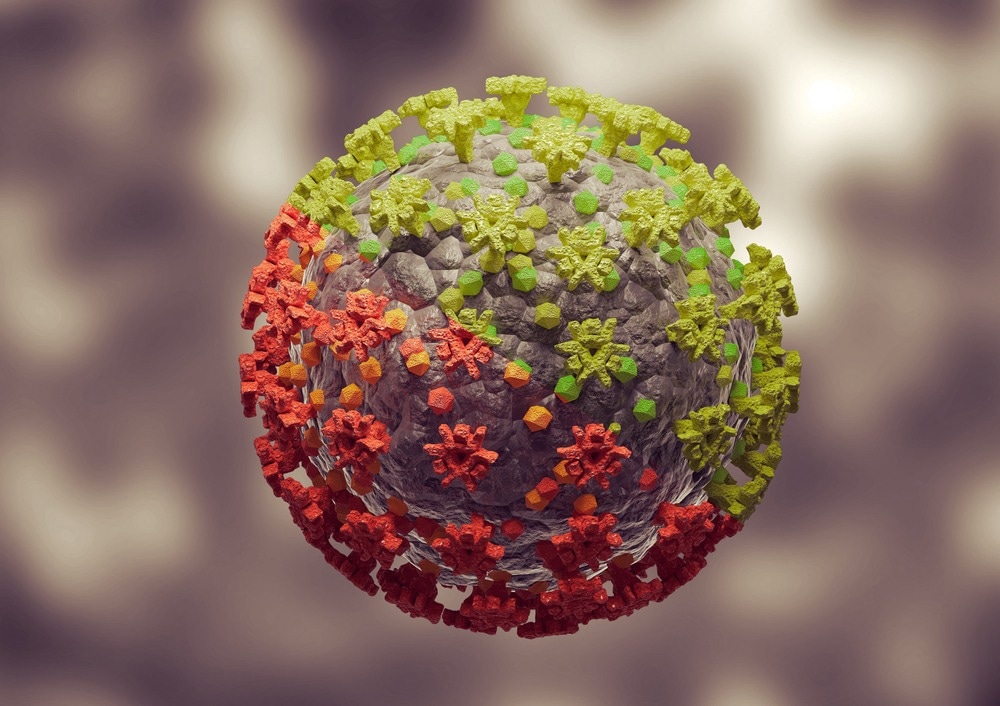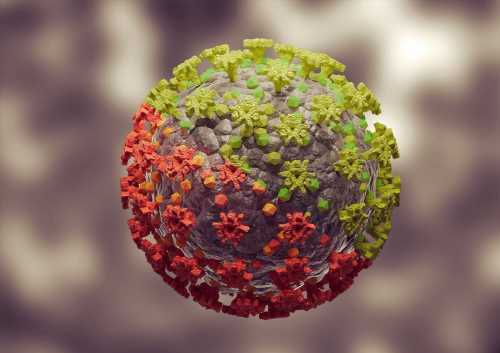How does imprinted SARS-CoV-2 humoral immunity drive convergent Omicron evolution?
In a recent study posted to the bioRxiv* server, researchers examined how imprinted severe acute respiratory syndrome coronavirus-2 (SARS-CoV-2) humoral immunity drives convergent evolution in continuously emerging Omicron subvariants. Notably, they investigated the humoral immune imprinting response only in recipients of inactivated vaccines, although messenger ribonucleic acid (mRNA) technology-based vaccines induce a stronger overall humoral immune response.

Background
The SARS-CoV-2 Omicron variant is rapidly and continuously evolving, leading to the simultaneous emergence of numerous subvariants. Despite divergent evolutionary courses of Omicron subvariants, mutations on the receptor-binding domain (RBD) region of their spike (S) protein converge on several hotspots (e.g., R346, G446, N450, K356, K444, V445, L452, N460, F486, F490, R493, and S494).
Deep mutational scanning (DMS) has revealed most of the mutations on these residues are antibody-evasive. Thus, adversely impact the efficacy of coronavirus disease 2019 (COVID-19) vaccines and antibody therapeutics. Studies have barely investigated the driving force and need for these convergent mutations in Omicron subvariants, and how they impact humoral immunity also remains unclear.
About the study
In the present study, researchers constructed pseudoviruses of 50 Omicron subvariants, including Omicron BA.2, BA.2.75, and BA.4/5, carrying convergent mutations. They examined the neutralizing activities of therapeutic neutralizing antibodies (NAbs) and convalescent plasma against them. The latter had monoclonal antibodies (mAbs) generated naturally following BA.2 and BA.5 breakthrough infections.
The team integrated DMS-derived data profiles of the new mAbs isolated from BA.2 and BA.5 convalescents, followed by t-distributed stochastic neighbor embedding (t-SNE) for visualization. Finally, they determined the epitope groups of new mAbs.
They recruited cohorts of individuals who received three doses of CoronaVac with or without BA.1, BA.2 or BA.5 breakthrough infection. Then, they collected convalescent plasma samples on average around four weeks after hospital discharge. Likewise, they collected plasma from the CoronaVac vaccinees four weeks following the third vaccination.
Next, the researchers examined the relative human angiotensin-converting enzyme 2 (hACE2) binding capability of these convergent variants by evaluating hACE2 inhibitory efficiency against the pseudoviruses. Notably, ACE2-binding affinity determines the transmission potential of a SARS-CoV-2 variant.
Study findings
The study results demonstrated that multiple Omicron convergent mutants could cause striking evasion of NAb drugs and convalescent plasma, including BA.5 breakthrough infection, while retaining adequate hACE2 binding capability.
Among all tested variants, BQ.1.1.10, BA.4.6.3, XBB, and CH.1.1 emerged as the most antibody-evasive strains displaying even lower 50% neutralization titer (NT50) than SARS-CoV-1, suggesting high antigenic drift and potential serotype conversion. SA55 was the only NAb demonstrating high neutralizing potency against all tested Omicron subvariants. Among the tested variants, XBB and BQ.1.1 exhibited the strongest resistance to therapeutic mAbs and cocktails.
Further, plasma from convalescents with BA.5 breakthrough infection exhibited higher neutralization against BA.5 subvariants, such as BQ.1 and BQ.1.1. Clearly, Omicron BA.5-based vaccine boosters could prove beneficial against convergent variants of BA.5 sublineages. However, it is also likely that some mutations in the N-terminal domain (NTD), such as Y144del in BQ.1.18, could severely reduce BA.5 breakthrough infection plasma neutralization titers.
Taken together, the study results suggested that the current herd immunity and vaccine boosters based on the Omicron BA.5 subvariant might not provide good protection against breakthrough infections by other Omicron subvariants.
The authors could identify only two major peaks, R346T/S and K444E/Q/N/T/M, representing immune pressure for BA.5-elicited antibodies. Intriguingly, these two mutational hotspots are the most frequently mutated in evolving Omicron BA.4/5 subvariants and occurred in multiple convergent sublineages.
Conclusions
Due to humoral immune imprinting elicited by vaccination or prior infection, Omicron breakthrough infection(s) caused significant reductions in the NAbs epitope diversity and a higher percentage of non-neutralizing mAbs, which, in turn, drove further convergent evolution. Remarkably, nAb repertoires induced by all Omicron breakthrough infections were distinct from those stimulated by wild-type SARS-CoV-2 strains. Moreover, integrated DMS profiles pointed at convergent RBD mutations accurately. Similarly, the BA.2.75/BA.5 subvariants evolution trends could be simulated via study-constructed convergent pseudovirus mutants.
Since broad-spectrum SARS-CoV-2 vaccines and NAb drugs are urgently needed to combat emerging variants, these convergent mutants could help examine their efficacy. Most importantly, these mutants could be safely constructed and experimented with in biosafety level 2 laboratories without giving rise to any infectious pandemic virus. For example, the study prediction model generated BQ.1.1 and CH.1.1 were highly similar to BA.5-S3 and BA.2.75-S4/S6, respectively.
*Important notice
bioRxiv publishes preliminary scientific reports that are not peer-reviewed and, therefore, should not be regarded as conclusive, guide clinical practice/health-related behavior, or treated as established information.
- Cao, Y. et al. (2022) "Imprinted SARS-CoV-2 humoral immunity induces convergent Omicron RBD evolution". bioRxiv. doi: 10.1101/2022.09.15.507787. https://www.biorxiv.org/content/10.1101/2022.09.15.507787v4
Posted in: Medical Science News | Medical Research News | Disease/Infection News
Tags: ACE2, Angiotensin, Angiotensin-Converting Enzyme 2, Antibodies, Antibody, binding affinity, Convalescent Plasma, Coronavirus, Coronavirus Disease COVID-19, covid-19, Drugs, Efficacy, Enzyme, Evolution, Hospital, Immune Response, immunity, Omicron, Pandemic, Protein, Pseudovirus, Receptor, Respiratory, Ribonucleic Acid, SARS, SARS-CoV-2, Severe Acute Respiratory, Severe Acute Respiratory Syndrome, Syndrome, Therapeutics, Vaccine, Virus

Written by
Neha Mathur
Neha is a digital marketing professional based in Gurugram, India. She has a Master’s degree from the University of Rajasthan with a specialization in Biotechnology in 2008. She has experience in pre-clinical research as part of her research project in The Department of Toxicology at the prestigious Central Drug Research Institute (CDRI), Lucknow, India. She also holds a certification in C++ programming.
Source: Read Full Article
